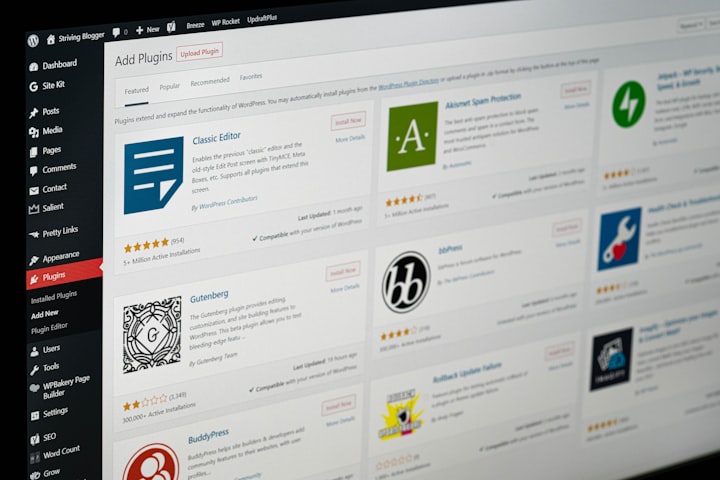How to Start an Email Newsletter on Ghost vs. Substack vs. Revue

(This post was commissioned to a writer on Upwork and is not edited).
Newsletters are phenomenally effective at publicizing articles, news, and other types of content. Even with social media becoming a rage, emails remain the top form of communication as most people check their emails every day.
Moreover, newsletters are unique to an individual or a business, giving you total control over them.
Nowadays, there are a handful of email newsletter platforms that writers, editors, website owners, and businesses can use to publicize their content.
Among them, Ghost, Revue, and Substack are some commonly heard names. But which one of them is more suitable for your requirements? Here’s a detailed comparison to answer this question.
Ghost
Found in April 2013, Ghost is a non-profit organization that’s on a mission to become the future of individual publishing. The platform creators want to provide open source tools for writers and journalists worldwide.
You can use Ghost to power different levels of websites, ranging from a small blog to a website run by a team of writers.
Why Use Ghost for Newsletters?
Ghost lets you build an individual business using your newsletter. Here, you’re the owner of your content. Plus, there are 0% transaction fees, allowing newbies to take charge too.
Moreover, Ghost has the honor of being the only membership platform that lets users create custom websites for their newsletters. It has a rich editor that gives you an easy writing experience, allowing you to add images, HTML, and embeds.
Here are some features of Ghost for newsletters:
- Rich Authoring: The writing environment lets you create unique content to keep your audience engaged.
- Optimized Distribution: Since Ghost has built-in SEO, it makes your content more discoverable. Moreover, features like native email newsletters and social sharing ensure effective distribution.
- Customizable: Depending on your style and brand theme, you can customize your newsletter accordingly and stand apart from others.
- Native Email: You can use your existing audience and publish content with just a few clicks to your email.
- Content Gating: The content you post on Ghost is only accessible to your members and is protected despite JavaScript being disabled.
Shortcomings Of Ghost
Although Ghost has a speedy and user-friendly interface with built-in SEO optimization, there are a few shortcomings that you must know about.
First off, Ghost has a limited number of themes. However, that’s easy to overlook if you’re not very specific about the way the newsletter looks.
A bigger concern is the pricing. Since there’s no free option, you have to get one of the Ghost Pro Plans, priced as such:
- Starter at $9 per month billed annually and $15 billed monthly
- Basic at $29 per month billed annually and $36 billed monthly
- Standard at $79 per month billed annually and $99 billed monthly
- Business at $199 per month billed annually and $249 billed monthly
As you can see, the plans are quite costly, especially for beginners. The Starter is the cheapest plan, but it only allows up to 1000 members and 25k views per month. Plus, it only lets you have one staff user.
To add more members, allow more views, and get custom integrations, you’ll inevitably have to get the Basic plan, at least.
Substack
Substack also advertises itself as a ‘place for independent writing’. Users can create newsletters in different categories, such as finance, business, culture, politics, music, climate, science, health, technology, sports, faith, art, literature, and many more.
Why Use Substack for Newsletters?
Substack lets you decide if a post is free or just for subscribers. When publishing something, you can choose to only make it accessible to your paying subscribers.
Moreover, you can schedule posts to get a higher engagement. Here are some other features of Substack:
- Podcasting: Substack lets you publicize your podcasts without any hassle. All you have to do is upload the MP3 file and publish it. You can also record directly using the editor. The podcast will go to your site, mailing list, and podcast players.
- Import Mailing List: Starting on Substack is fairly easy since you can import an existing mailing list.
- Varying Subscriptions: You can let your subscribers choose between monthly or annual subscription. By offering annual subscriptions at discounted prices, you can incentivize people to subscribe. Likewise, you may also offer group subscriptions to companies and institutions.
- Gift Subscriptions: Substack also lets people buy gift subscriptions for their friends and family.
- Rich Media: Substack makes it very easy for you to embed Vimeo or YouTube videos, tweets, and Spotify tracks. Simply paste the URL, and it will embed seamlessly. For images, you just have to drag and drop them in place.
Shortcomings Of Substack
The biggest downside of Substack is its high cost. Here are two ways it’s more expensive than Ghost:
- Custom Domain: While a Ghost Pro plan includes domain hosting, you have to pay $50 extra for Substack.
- Transaction Fees: Ghost has 0% transaction fees, while Substack takes $5000 per year for every $50k you earn. Although you can create a newsletter for free, the platform takes 10% commissions on the revenue you generate from paid subscriptions.
Moreover, you cannot extend your functionality on Substack since the platform does not have any connecting apps or integrations. While Ghost has dynamic cards to offer a rich writing experience, Substack only has a basic editor.
Plus, it’s hard to stand out among other newsletters on Substack since everyone’s newsletter looks the same. You get a Substack-branded site as opposed to Ghost that lets you customize everything according to your brand.
More importantly, Substack lacks the SEO benefits provided by Ghost. Ghost is quickly indexed and can be found through search, while Substack gets minimal organic traffic.
Deborah Craver from Content Technologist says that her essay was picked up quickly by search engines when she posted it on Ghost, although the essay had been on Substack for months already.
Revue
Created by a Dutch company, Revue has now joined Twitter to make newsletters easily discoverable. It advertises itself as an ‘editorial newsletter platform’, offering users the opportunity to monetize their content through paid subscriptions.
The platform is more suited for start-ups, small-scale companies, and individual writers who don’t have the skill or time to create HTML templates.
Why Use Revue for Newsletters?
Revue has a few features that make it a remarkable option for creating newsletters.
- Editorial Style: With Revue, you can create stylish and professional newsletters that attract prospective customers’ attention.
- Direct Communication: Revue does not act as a middle man. Instead, it lets you communicate directly with your subscribers and readers via mailing lists.
- Free: You can publish a newsletter for free on Revue. The free tier allows you to use the professional editor, get unlimited subscribers, have unlimited team members, create a custom profile domain, use custom colors, and see engagement insights.
- Social Media: Since Revue is now owned by Twitter, social media integration is quick and easy. You can share your newsletters on any social media platform easily.
- Cross-Publishing: You can post your content to WordPress, Medium, and other platforms seamlessly.
To sync Revue with Ghost, use Zapier to ensure both platforms are continuously connected - Ghost collecting email addresses and Revue sending campaigns.
Shortcomings Of Revue
Like Substack, Revue also takes a cut of your earnings from paid newsletters. For every subscription you sell, the platform takes 5% of the earnings. Let’s put it in perspective.
Suppose you charge $5 for a monthly subscription. When someone buys a subscription, they pay you $5, of which 5% - which is $0.25 - goes to Revue.
Stripe, the payment partner for Revue, charges 2.9% + $0.30 on every transaction, which totals $0.45 for $5. As a result, you earn $4.30 for a subscription you sold for $5.
Secondly, you have to use Revue’s branded template for your newsletter, unlike Ghost, where you can customize the layout.
Finally, like Substack, Revue also does not have native SEO, lowering your chances of getting organic traffic.
Ghost vs. Substack vs. Revue: When To Use Which Platform?
To put it simply, there’s no one-fits-all solution when it comes to creating email newsletters. While some might find Revue to be more useful due to its Twitter and Ghost integration, others may prefer Substack since it has a wealth of features.
On the other hand, Ghost also shines bright since it offers a custom domain with every plan and has built-in SEO. Thus, it’s easier for you to be found on search engines and come up in search results.
But then again, Ghost does not let you create email newsletters for free, and you have to pick one of the pain plans.
Now, it’s up to you to decide. Would you rather pay a monthly fee with 0% commissions on transactions or set up a newsletter for free and lose 5% to 10% on the total revenue generated?
Therefore, when choosing the best platform for your newsletters, consider your payment preferences, audience, and SEO needs.




Comments ()